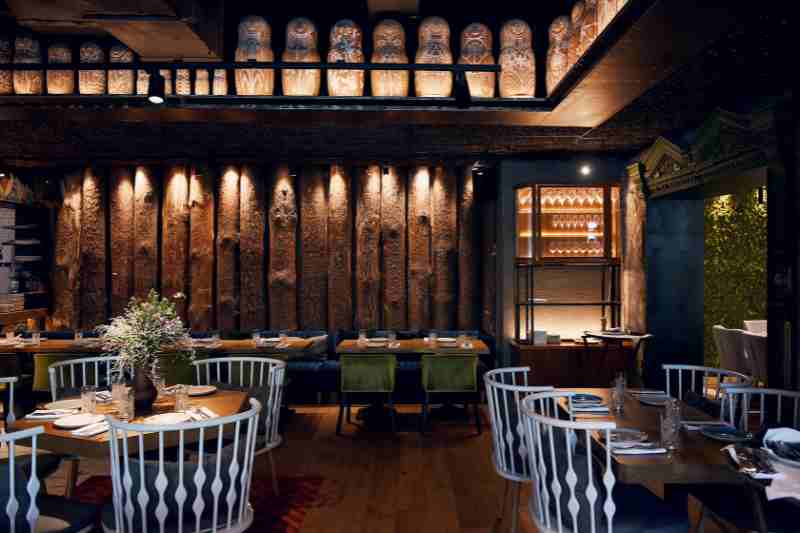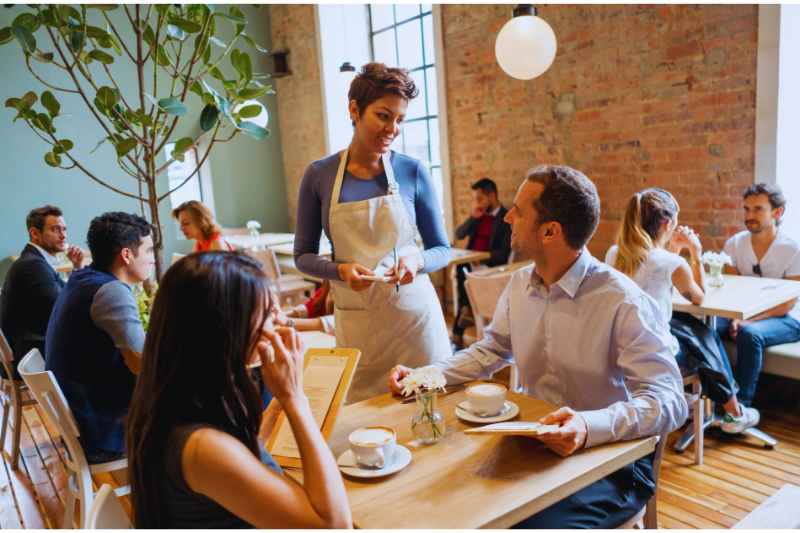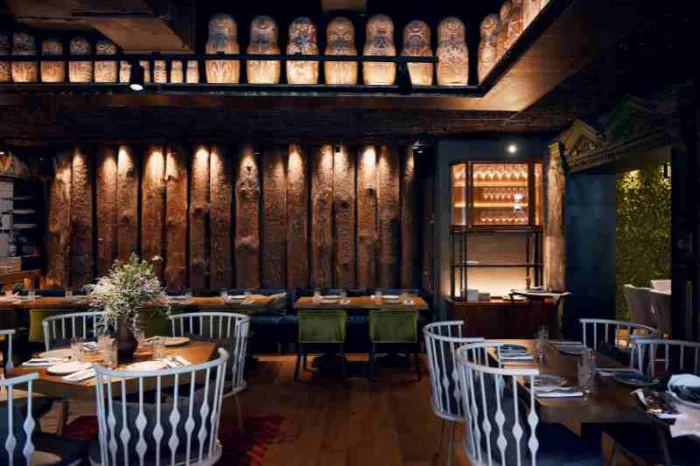Key takeaways
- The types of restaurant security systems include security cameras, keypads, fire alarms, and POS system security.
- Restaurants face security challenges such as vandalism, customer safety, and inventory loss.
- Choose a restaurant security plan by assessing your risk points and encouraging security awareness training for staff.

In the bustling world of hospitality, where customer satisfaction and safety are paramount, restaurant security systems often take a backseat to more visible concerns like service quality and menu variety. However, for property managers overseeing restaurant operations, ensuring robust physical security measures is crucial for protecting both the physical premises and the business interests at stake.
In this post, we provide an overview of the best restaurant security system. Next, we explore the unique security challenges that restaurant owners face. Lastly, we explore the different types of restaurant security systems and how to use them.
This post covers:
- The best restaurant security system
- Security challenges that restaurants face
- Types of restaurant security systems
- How to choose a restaurant security plan
- Restaurant security system FAQs
The best restaurant security system
The best restaurant security system is ButterflyMX.
The ButterflyMX ecosystem offers a number of choices to add to your restaurant security system, such as our Access Control System and Security Cameras. Join more than 10,000 others who have installed ButterflyMX. We’ve even garnered over 20,000 five-star reviews, making us one of the most highly-rated security solutions for commercial buildings.
The ButterflyMX access control platform offers the following features for restaurants:
- ButterflyMX Bullet and Dome Cameras. Designed for both indoor and outdoor use, our Security Cameras are easy to install and provide HD video with night vision capabilities. They store footage both in the cloud and locally for up to a week, ensuring you can easily solve security issues as they arrive.
- 24/7 security camera recording. Our cameras continuously record, with the ability to link footage to specific access events, making it easy for you to review footage when necessary.
- Detailed audit logs. Access logs show details of who entered areas throughout your restaurant, which are stored for up to a year.
- Remote management. Control and manage your system via the ButterflyMX mobile app or online dashboard without ever having to step onto the property.
- Versatile Keypads and Readers. These devices support various credentials, including smartphones, PIN codes, key cards, and fobs.
- Integrated security system. Seamlessly connect your surveillance cameras, smart locks, and software to create a unified security solution.
- Vehicle Readers and Windshield Tags. Facilitate touchless, keyless entry to your parking areas, giving employees an easy way to access the property.
- Comprehensive access management: Oversee all areas of your property, including public spaces, elevators, garages, and administrative offices, from a single platform.
Security challenges that restaurants face
Restaurants need to prepare for the future and adapt their security technology to the current times. Restaurants face a number of security challenges that are unique to the service industry.
Restaurant security challenges include:
- Theft and burglary. Restaurants are prime targets for theft, whether it’s internal theft by employees, external theft by customers or intruders, or burglary during non-operating hours, posing risks to both cash and valuable equipment.
- Vandalism. Property can be damaged by unruly customers or vandals, including graffiti and other forms of defacement, leading to costly repairs and negative impacts on the restaurant’s image.
- Cash handling risks. Inefficient cash management practices can lead to theft or mismanagement, including issues with cash drops, deposits, and inadequate procedures to protect cash on hand.
- Cybersecurity threats. The hacking of POS systems and payment processors, as well as data breaches involving customer payment information and personal data, pose serious risks to both operational security and customer trust.
- Inventory loss. Theft of food, beverages, and kitchen equipment, as well as unauthorized access to storage areas, can lead to significant financial losses and operational disruptions.
- Customer safety. Physical altercations and safety concerns related to alcohol consumption can create a hazardous environment, impacting both customer experience and overall security.
- Vendor and delivery security. Risks associated with vendor interactions and deliveries, including unverified or untrusted suppliers gaining access, can compromise security.
- Legal and compliance issues. Non-compliance with local security regulations, standards, and insurance coverage requirements can result in legal repercussions and financial liability.

Types of restaurant security systems
The types of restaurant security technology that your restaurant will need depend on the unique layout and operations of your property.
The types of restaurant security include:
- Camera systems
- Alarm systems
- Access control systems
- Point-of-sale (POS) security
- Fire and safety alarms
- Security lighting
1. Camera systems
Business security camera installation or closed-circuit television (CCTV) is fundamental to restaurant security. These systems include high-definition cameras placed strategically throughout the premises—such as entrances, exits, dining areas, and storage rooms. Modern systems often feature remote monitoring capabilities, allowing managers to view live feeds and recorded footage from anywhere. Integration with motion detection and smart analytics can enhance security by alerting staff to unusual activity and providing valuable evidence in case of incidents.
2. Alarm systems
Alarm systems are crucial for detecting unauthorized entry and other security breaches. These systems include sensors on doors and windows, motion detectors, and glass-break sensors. Alarms can be set to trigger when security is compromised, notifying property managers and local authorities. Many alarm systems also offer remote monitoring and control features, enabling property managers to adjust settings or respond to alerts from a distance.
3. Access control systems
Access control systems manage and monitor who can enter restricted areas within the restaurant. These systems use key cards, fobs, or biometric identification (e.g., fingerprint or facial recognition) to grant or deny access. By limiting access to sensitive areas such as offices, storage rooms, and cash handling zones, these systems help prevent unauthorized access and internal theft.
Watch how ButterflyMX works:
4. Point-of-sale (POS) security
POS security systems are essential for protecting financial transactions and sensitive customer data. These systems include encrypted payment processing, secure card readers, and regular software updates to protect against cyber threats. POS security also involves monitoring for fraudulent activities and ensuring compliance with industry standards like PCI-DSS (Payment Card Industry Data Security Standard).
5. Fire and safety alarms
Fire alarms and safety systems are critical for protecting restaurants from fire hazards. These systems include smoke detectors, heat sensors, and fire alarm panels that alert staff to potential fires. Integration with sprinkler systems or fire suppression systems in the kitchen can help control or extinguish fires before they spread. Regular maintenance and testing ensure that these systems are operational when needed.
6. Security lighting
Security lighting involves installing lights around the restaurant’s exterior to deter criminal activity and enhance visibility during night hours. This can include motion-activated lights, floodlights, and illuminated signage. Proper lighting around entry points, parking lots, and less-frequented areas can significantly improve overall security.
How to choose a restaurant security plan
- Risk assessment. Conduct a thorough risk assessment to identify vulnerabilities specific to your restaurant. Consider factors such as location, type of cuisine, hours of operation, and historical security issues. Engage with security experts if necessary to gain a comprehensive understanding of potential risks.
- Security plan development. Based on the risk assessment, develop a detailed security plan outlining measures for physical security, operational security, and cybersecurity. Include protocols for routine security checks, emergency responses, and incident reporting.
- Regular reviews and updates. Security is not a one-time setup but an ongoing process. Regularly review and update your security measures to address new threats and incorporate advancements in technology. Schedule periodic audits and drills to ensure that security protocols are effective and staff are prepared.
- Communication and collaboration. Foster a culture of security awareness among staff by maintaining open lines of communication. Encourage employees to report security concerns and suggest improvements. Collaborate with local law enforcement and security professionals to stay informed about potential threats and best practices.
Restaurant security system FAQ
- How much do restaurant security systems cost?
- Do restaurants need cyber security?
- Do restaurants keep security footage?
- How often do restaurants check security cameras?
How much do restaurant security systems cost?
The cost for restaurant security ranges widely. Some systems cost a few hundred dollars while others cost a few thousand. The cost will depend on how complex your system is to meet your restaurant’s security needs. For example, fine dining may require a higher-end system that will cost more whereas a fast food establishment may opt for a cheaper, straightforward security system.
Do restaurants need cyber security?
Yes, we believe restaurants should have some form of cyber security protocols. This is important when protecting customer and employee data, which can include credit card information and social security numbers.
Do restaurants keep security footage?
Most restaurants only keep security footage for a short period of time. This all depends on the type of storage data plan that you decide to pursue. Some systems store footage for longer than others. Additionally, if anything goes wrong, you can download and store footage indefinitely.
How often do restaurants check security cameras?
Restaurant owners usually only check their security cameras if they have reason to. However, many camera systems offer you the ability to remotely livestream security footage or provide push notifications when suspicious activity is detected.

Get your free quote!
Fill in the form below, and we'll email you right back.
Want a free quote?
Fill in the form below, and we'll email you right back.
You’ll be redirected shortly...






